Topic Question Set
Q 1
:
The given circuit shows a uniform straight wire AB of 40 cm length fixed at both ends. In order to get zero reading in the galvanometer G, the free end of J is to be placed from B at [2024]
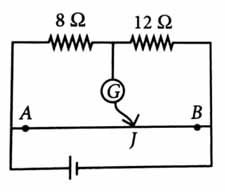

32 cm
8 cm
16 cm
24 cm
(4)
The galvanometer shows zero reading when no current passes through it.
Condition of balanced metre bridge,
Given :
or
From B,
Q 2
:
A resistance wire connected in the left gap of a metre bridge balances a 10 resistance in the right gap at a point which divides the bridge wire in the ratio 3 : 2. If the length of the resistance wire is 1.5 m, then the length of 1 of the resistance wire is [2020]
(2)
Unknown is .
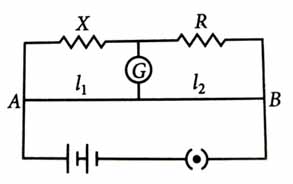
Here,
Thus, 1.5 m length has resistance hence, length of of the resistance wire
Q 3
:
The metre bridge shown is in balance position with If we now interchange the positions of galvanometer and cell, will the bridge work? If yes, what will be the balanced condition? [2019]
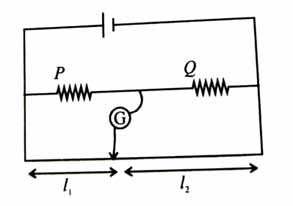

yes,
no, no null point
yes,
yes,
(4)
Yes, the bridge will work. For a balanced condition, the current drawn from the battery will be zero. Also, and . Therefore, the condition will remain same after interchanging the cell and galvanometer.
Q 4
:
The resistances in the two arms of the meter bridge are 5 Ω and RΩ respectively. When the resistance R is shunted with an equal resistance, the new balance point is at 1.6. The resistance R is [2014]
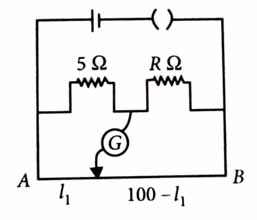

10 Ω
15 Ω
20 Ω
25 Ω
(2)
In the first case,
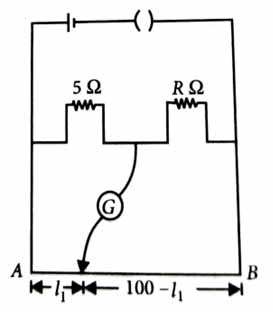
At balance point
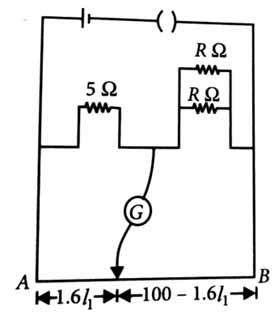
...(i)
In the second case,
At balance point
..(ii)
Divide eqn. (i) by eqn. (ii), we get
or
or
Substituting this value in eqn. (i), we get:
or

